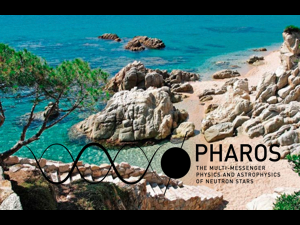Speaker
Magdalena Sieniawska
(Nicolaus Copernicus Astronomical Center PAS)
Description
Using parametric equations of state (relativistic polytropes and simple quark bag model)
to model dense-matter phase transitions, we study global, measurable astrophysical
parameters of compact stars, such as their allowed radii and tidal deformabilities.
We also investigate the influence of stiffness of matter before the onset of the
phase transitions on the parameters of the possible exotic dense phase.
The aim of our study is to compare the parameter space of the dense
matter equation of state permitting phase transitions to a sub-space compatible
with by current observational constraints, such as the maximum observable mass,
tidal deformabilities of neutron star mergers, radii of configurations before
the onset of the phase transition, and to give predictions for future observations.
We study solutions of the Tolman-Oppenheimer-Volkoff equations for a flexible
set of parametric equations of state, constructed using a realistic description
of neutron-star crust (up to the nuclear saturation density), and relativistic
polytropes connected by a density-jump phase transition to a simple bag model
description of deconfined quark matter.
In order to be consistent with recent observations of massive neutron
stars, a compact star with a strong phase transition cannot have a radius
smaller than 12 km in the range of masses $1.2 - 1.6\,M_\odot$. We also compare
tidal deformabilities of stars with weak and strong phase transitions with
the results of the GW170817 neutron star merger. Specifically, we study
characteristic phase transition features in the $\Lambda_1-\Lambda_2$ relation,
and estimate the deviations of our results from the approximate formulae for
$\tilde{\Lambda}-R(M_1)$ and $\Lambda$-compactness, proposed in the literature.
We find constraints on a hybrid equations of state to produce stable neutron stars on the twin branch. For the exemplary equation of state most of the high-mass twins can be formed for the minimal values of the density jump $\lambda = 1.33-1.54$ and corresponding values of the square of the speed of sound $\alpha = 0.7-0.37$. We compare results with gravitational waves observations, as well as with the theoretical causal limit and find out that the more favorable equations of state have phase transition point at the baryon density around $0.34-0.51$ [fm$^{-3}$]. We also show, that minimal radius that can be produced on a twin branch is between 9.5 and 10.5 km.
Primary author
Magdalena Sieniawska
(Nicolaus Copernicus Astronomical Center PAS)

